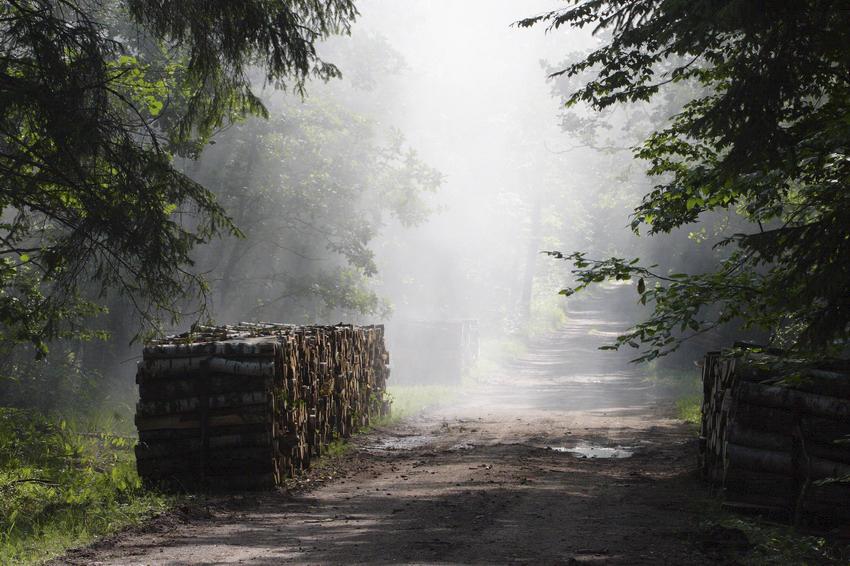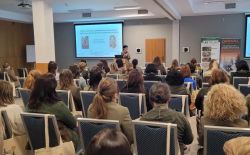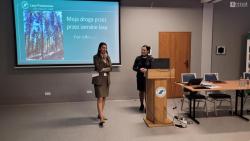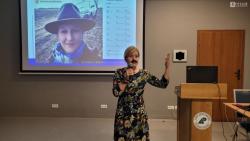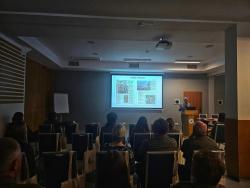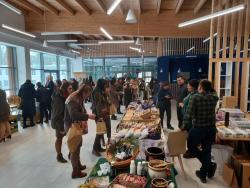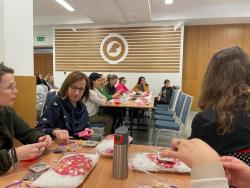 Asset Publisher
Asset Publisher
The State Forests National Forest Holding
The State Forests National Forest Holding is the largest organisation in the European Union managing forests, which belong to the State Treasury and celebrating its 90 anniversary this year.
Presently, we manage the area of one third of Poland's territory. Not long after the end of the Second World War, there was only 21 % of the area. Every year we plant 500 million of new trees, as we want Polish forests grow all the time.
Every year Polish foresters plant 500 million of trees.
85 % of nature reserves in Poland are located within the State Forests. 40 % of the forests managed by General Directorate of the State Forests are protected within the framework of European network Natura 2000. We fight against many threats: natural disasters, plaques of insects, trees' diseases, fires, pollutions, as well as poaching and vandalism.
We take care the forestry supplying the market with timber, as ecological and universal material, to be carried on in accordance with rules of balanced development (photography P.Fabjański).
One of our major tasks is making forests accessible to the society. We invite you to take advantage of these beautifully located within the forest wilderness holiday resorts, forester's lodges or guest rooms. That is for you, we create thousand kilometres of hiking trails, cycling paths or camping sites. All the above mentioned, you can find in service www.czaswlas.pl.
We also take care the forestry supplying the market with timber, as ecological and universal material, to be carried on in accordance with rules of balanced development. We obtain over 30 million of cubic meters of wood annually, twice as much as at the beginning of the nineties of the XX century.
Despite of this, the average of wood abundance per hectare of our forests is one fourth bigger than 20 years ago and 40% bigger than the average of European Union currently amounts.
In Poland in sectors connected with the forestry, there work about 375 thousand of people. It means that each 40 working Pole works in the forest.
In Poland in sectors connected with the forestry, there work about 375 thousand of people. It means that each 40 working Pole works in the forest. The sector of wood processing works out approximately 8 % of our GDP (Gross Domestic Product). Among others, thanks to the timber from the State Forests Poland is the 10 largest producer of furniture in the world, and the 4 largest furniture exporter.
The State Forests employ 25 thousand people. That way we are the 9 biggest employer in Poland. Among the largest companies in our country it takes 22 place in respect of its incomes and 11 place in respect of its profits. The value of assets, we manage, reaches 300 million zl. If we add social values, it will be worth one billion zlotych. We do not use money from the budget, but we earn money on our own to support the business. In spite of the financial crisis, since 2002, we continuously note down profits. Moreover, we pay taxes amounting 1,3 billion zl annually.
87 % of Poles think, the foresters are competent. We willingly share our knowledge of Polish forests, of their history and of nature values with the others. We publish books, periodicals, brochures; we also administer the website www.lasy.gov.pl . For children, the youth and teachers, we prepared internet service "E-lynx' Lynx Forest" (www.erys.pl). Our staff has supported schools in field of nature education for years. We also organise many actions to let people broaden their knowledge about forest, nature and ecology.
 Asset Publisher
Asset Publisher
 Asset Publisher
Asset Publisher
Kobieta w leśnictwie. Obecność na przestrzeni 100-lat istnienia Lasów Państwowych
Kobieta w leśnictwie. Obecność na przestrzeni 100-lat istnienia Lasów Państwowych
Pierwsza w historii RDLP w Szczecinku konferencja naukowa o kobiecej tematyce
Kobiet w leśnym świecie jest coraz więcej. Pracujemy na różnych stanowiskach, w biurach i w terenie. Tym, jak wyglądała droga, którą przeszłyśmy, jak układały się nasze leśne ścieżki, dzieliłyśmy się podczas spotkania.
100- letnia historia Lasów Państwowych zapisana jest imponującymi postaciami kobiet. O kobietach dwudziestolecia międzywojennego opowiadał prof. dr hab. Jarosław Szaban z Leśnictwo - Uniwersytet Przyrodniczy w Poznaniu, z kolei o kobietach nauki i łączeniu pasji do przyrody z karierą naukową mówił mgr inż. Artur Sawicki z Instytut Badawczy Leśnictwa.
Dr Anna Wierzbicka z UP w Poznaniu przedstawiła osiągnięcia kobiet w edukacji leśnej w Europie, a Jarosław Opas z Nadleśnictwa Olsztynek i Mariusz Opas z Nadleśnictwo Gdańsk, Lasy Państwowe wspominali postać Simony Kossak, pani profesor nauk leśnych, wielkiej miłośniczki Puszczy Białowieskiej i orędowniczki empatii i szacunku wobec świata przyrody. O swojej historii pracy w lasach opowiedziała także Renata Łudzik-Wasilko, pani leśniczy z Nadleśnictwo Karnieszewice, Lasy Państwowe, a o specyfice pracy w górskim Nadleśnictwo Świeradów mówiła pani nadleśniczy Anna Kulik. O aktualnym obrazie kobiety pracujących w Lasach Państwowych i wyzwaniach komunikacyjnych i wizerunkowych, jakie stoją przed nami, opowiadała Magdalena Stępińska ze Stowarzyszenia Leśników Fotografików.
W panelu tematycznym „Natura jest kobietą” swoją lawendową pasję przedstawiła Anna Mazur z Regionalna Dyrekcja Lasów Państwowych w Katowicach, a o niezwykłych historiach zawartych w kawałkach drewna opowiedziała mgr inż. Monika Gach z Wydział Leśny UR Kraków. Wieloznaczne aspekty ziołolecznictwa przedstawiał dr hab. Paweł Staniszewski Wydział Leśny Szkoły Głównej Gospodarstwa Wiejskiego w Warszawie, a o artystycznej stodole w Nadleśnictwo Spychowo, Lasy Państwowe, miejscu spotkań kultury, sztuki i leśnictwa mówiła Urszula Dyl-Nadolna. Maria Rothert – Proniewicz zabrała nas w spokojny, kojący świat "kąpieli leśnych".
Drugi dzień spotkania wypełniony był lawendowymi warsztatami i wymianą osobistych doświadczeń w pracy w Lasach Państwowych. Atmosfera na konferencji była niezwykła, a dyskusja bardzo potrzebna. Jak podkreśliła organizatorka, Dyrektor RDLP w Szczecinku, Wioletta Koper - Staszowska kobiety pracujące w leśnictwie nie chcą być traktowane ze specjalna troską czy pobłażeniem. Chcemy, żeby doceniano nas na równi z innymi pracownikami i doceniamo za dobrze wykonaną pracę.
Mamy nadzieję, że nasze spotkanie da początek regularnym dyskusjom i poszukiwaniu skutecznych rozwiązań, dzieki którym warunki pracy, awansów, czy rozwijanie swoich umiejętności będą równe dla wszystkich pracowników.
fot. K. Klimek, M. Wysokowicz, M. Stasiuk, D. Nowak-Staszewska


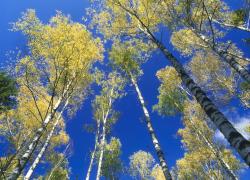 fot. Paweł Fabijański
fot. Paweł Fabijański
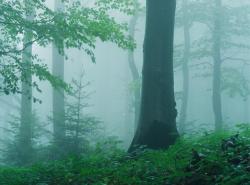 fot. Paweł Fabijański
fot. Paweł Fabijański
 fot. Paweł Fabijański
fot. Paweł Fabijański
